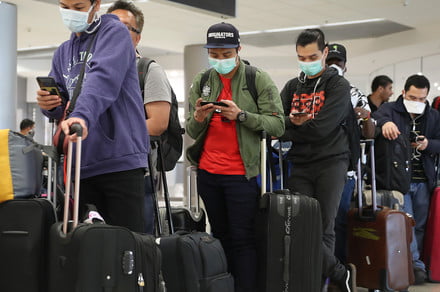Even during times when we are not facing a public health crisis, traveling on an airplane seemed a sure-fire way to get sick. Put a whole lot of people in close proximity in a tin can in the sky, add one or two miscellaneous viruses, then breathe each other’s recycled air for the duration of the journey, and the probable results don’t exactly scream good health. But how likely are you to contract a virus on an airplane? And what are the steps you can take to avoid it?
Those questions were recently given empirical, computer modeling attention by researchers in the Department of Computer Science at the University of West Florida. Their work into what is termed “pedestrian dynamics models” could help reduce the risk of disease spread in airplanes. Provided the advice is followed, that is!
“Our team models disease spread by considering the movement of each individual in a crowd,” Ashok Srinivasan, a professor in the Department of Computer Science University of West Florida, told Digital Trends. “We can then identify how one can induce subtle changes in human movement patterns so that social distance is maintained without preventing people from being in crowds.”
Using the Frontera supercomputer at the Texas Advanced Computing Center (TACC), the team ran models, derived from the relatively new field of pedestrian dynamics, to analyze the movement of people. The models allow them to contextualize the movements of individuals to see how many people an infective person would theoretically come close to. This can therefore be used to estimate on-board infection spread.
“We found that there is a much higher risk of infection spread during boarding than during deplaning,” Srinivasan said. “During boarding, people tend to impede others much more while stowing their luggage, which causes small clusters of human proximity. This leads to an increased risk of infection spread. We also found that using fewer zones while boarding reduces infection risk. The use of more zones brings passengers into the plane faster. However, it also tends to make people cluster together more in the same areas of the plane, which increases the risk of disease spread.”
If people are willing to spend a few minutes more in the boarding process, Srinivasan explained, they could reduce infection spread risk significantly. That wasn’t the researchers’ only finding.
“We found that using multiple small planes is preferable to using one large one,” Srinivasan continued. “This may be hard to implement in normal circumstances. However, it could be considered an alternative to banning air travel. Our group also showed that changes in queues, such as the security queues at airports, could reduce infection risk by 75%.”

